The <f:setPropertyActionListener/> tag uses an action listener to directly set a value into a managed bean property
The <f:setPropertyActionListener/> tag uses
an action listener (created by the framework) to directly set a value into a
managed bean property; it is placed within a component derived from the ActionSource
class. The target
attribute indicates the managed bean property, while the value
attribute indicates the value of the property.
Note Keep in mind that action listeners are
executed in the order they are defined, which means that the presence of the <f:setPropertyActionListener/>
tag can affect the order in which the listeners are fired.
Common/basic usage in JSF - set a static text to a
managed bean property
Suppose we have the following managed bean:
@Named
@ViewScoped
public class PlayerBean implements Serializable {
private
static final long serialVersionUID = 1L;
private String playerName = "Rafael Nadal";
public
PlayerBean() {
}
// Getters
and setters
// dummy
action
public void
action(){
System.out.println("Name set: " + playerName);
}
}
In order to set a static text from a Facelets page
to a managed bean property we can write:
<?xml version='1.0' encoding='UTF-8' ?>
<!DOCTYPE html PUBLIC "-//W3C//DTD XHTML 1.0
Transitional//EN" "http://www.w3.org/TR/xhtml1/DTD/xhtml1-transitional.dtd">
<html
xmlns="http://www.w3.org/1999/xhtml"
xmlns:h="http://xmlns.jcp.org/jsf/html"
xmlns:f="http://xmlns.jcp.org/jsf/core">
<h:head>
<title>JSF setPropertyActionListener examples</title>
</h:head>
<h:body>
<h:form>
<h:commandButton value="Set name"
action="#{playerBean.action()}">
<f:setPropertyActionListener value="Roger
Federer" target="#{playerBean.playerName}"/>
</h:commandButton>
</h:form>
Player name:
<h:outputText value="#{playerBean.playerName}"/>
</h:body>
</html>
Data flow in image:
More examples:
Set a managed bean property value to
another property value from the same bean
@Named
@ViewScoped
public class PlayerBean implements Serializable {
private
static final long serialVersionUID = 1L;
private String playerName = "Rafael Nadal";
private
Player player;
public
PlayerBean() {
player = new
Player();
}
// Getters
and setters
}
Where Player is
the following object:
public class Player implements Serializable {
private
String name;
public
Player() {
}
public
Player(String name) {
this.name =
name;
}
// Getter and
setter
@Override
public String
toString() {
return
"Player{" + name + '}';
}
}
We can write:
<h:form>
<h:commandButton value="Set name">
<f:setPropertyActionListener
value="#{playerBean.playerName}"
target="#{playerBean.player.name}"/>
</h:commandButton>
</h:form>
Player name: <h:outputText value="#{playerBean.player.name}"/>
Set a property value from a managed bean to a property value in
another managed bean
Let's suppose that we have two managed beans (PlayerBean and TournamentBean):
@Named
@ViewScoped
public class PlayerBean implements Serializable {
private
static final long serialVersionUID = 1L;
private String playerName = "Rafael Nadal";
public
PlayerBean() {
}
// Getter and
setter
}
@Named
@ViewScoped
public class TournamentBean implements Serializable
{
private
static final long serialVersionUID = 1L;
private Player registeredPlayer;
public
TournamentBean() {
registeredPlayer = new Player();
}
// Getter and
setter
}
And, we want to pass the playerName property value from PlayerBean
bean to be the name
value of the registeredPlayer property from
the TournamentBean bean:
<h:form>
<h:commandButton value="Set name">
<f:setPropertyActionListener
value="#{playerBean.playerName}"
target="#{tournamentBean.registeredPlayer.name}"/>
</h:commandButton>
</h:form>
Player name: <h:outputText value="#{tournamentBean.registeredPlayer.name}"/>
Remove an item from a list of items
Because <f:setPropertyActionListener/> allows you to set a value directly in your managed bean before executing an action method, it is commonly used in combination with <h:commandButton/> in order to set the user selection from a list of multiple options before further processing. So, having the following managed bean:
@Named
@ViewScoped
public class TournamentBean implements Serializable
{
private
static final long serialVersionUID = 1L;
private Player selectedPlayer;
private List<Player> players;
public
TournamentBean() {
selectedPlayer = new Player();
players = new ArrayList<>(Arrays.asList(new Player("Rafael
Nadal"), new Player("Novak Djokovic"),
new Player("Roger Federer"), new Player("Andy
Murray"), new Player("David Ferrer")));
}
// Getters
and setters
public void
removePlayer() {
players.remove(selectedPlayer);
System.out.println("Removed " + selectedPlayer);
}
}
Where Player is
the following object:
public class Player implements Serializable {
private
String name;
public
Player() {
}
public
Player(String name) {
this.name =
name;
}
// Getter and
setter
@Override
public String
toString() {
return
"Player{" + name + '}';
}
}
If we want to display the above players in a list
and allow the user to remove players one by one, we can write the following
Facelets page:
<h:form>
<ul
style="list-style:none;">
<ui:repeat value="#{tournamentBean.players}"
var="player">
<li>
<h:commandLink
action="#{tournamentBean.removePlayer()}">
<h:graphicImage name="imgs/del.png"
title="Remove"/>
<f:setPropertyActionListener value="#{player}"
target="#{tournamentBean.selectedPlayer}"/>
</h:commandLink>
#{player.name}
</li>
</ui:repeat>
</ul>
</h:form>
</h:body>
</html>
Each time a user clicks on the delete icon, the <f:setPropertyActionListener/> tag sets the managed
bean selectedPlayer property with the player value associated to the selected icon. This is
happening before the action method is called. Afterwards, the <h:commandLink/> causes the execution of the removePlayer() action method. This method searches for selectedPlayer set via <f:setPropertyActionListener/>
and remove it. If we check the
console output, we should see the item which was removed from list:
E.g. Removed
Player{Novak Djokovic}
More resources on Constantin Alin, ZEEF page.
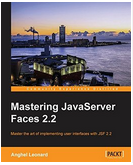


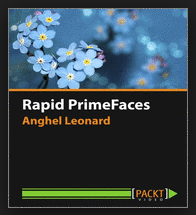




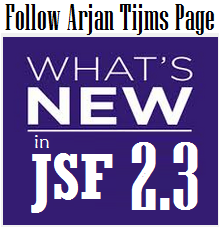




 JSF 2 Tutorials at www.mkyong.com
JSF 2 Tutorials at www.mkyong.com  JavaServer Faces (JSF) Tutorial
JavaServer Faces (JSF) Tutorial 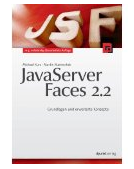
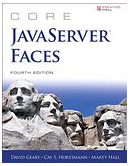








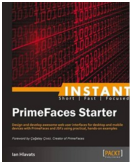

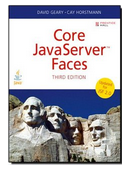


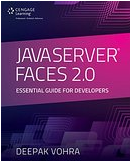





Niciun comentariu :
Trimiteți un comentariu